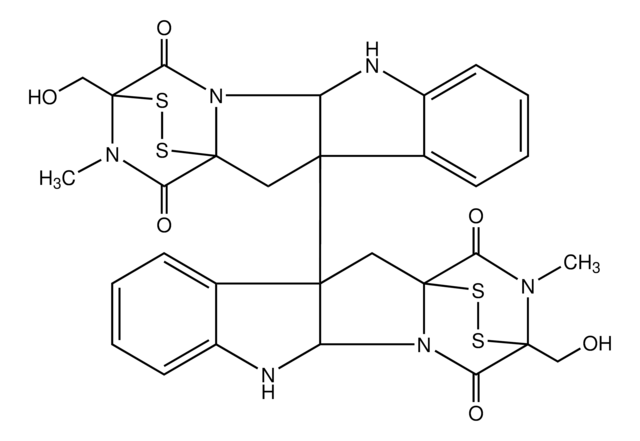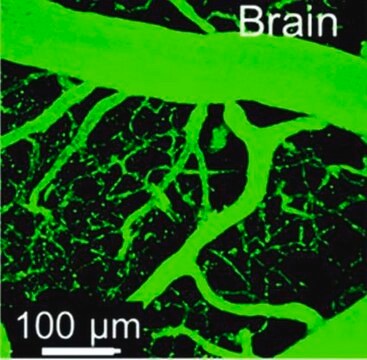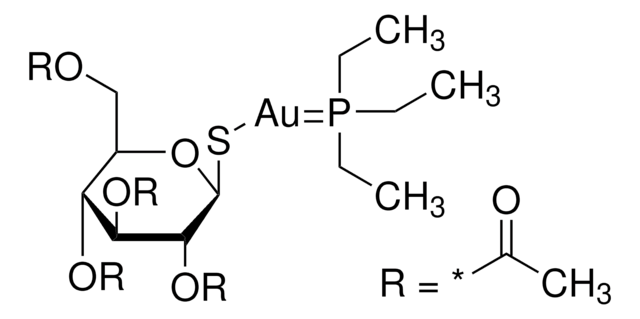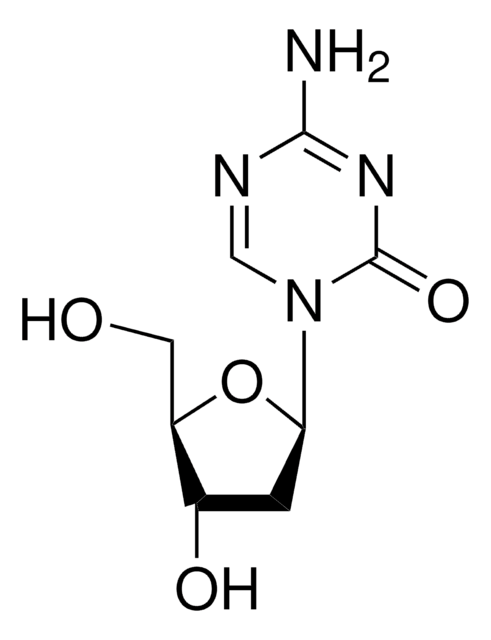推荐产品
生物源
Chaetomium cochliodes
品質等級
化驗
≥98% (HPLC)
形狀
powder
溶解度
DMSO: soluble
acetone: soluble
ethyl acetate: soluble
儲存溫度
−20°C
InChI
1S/C31H30N6O6S4/c1-33-25(42)30(15-38)34(2)23(40)28(33,44-46-30)12-17-13-36(21-11-7-4-8-18(17)21)27-14-29-24(41)35(3)31(16-39,47-45-29)26(43)37(29)22(27)32-20-10-6-5-9-19(20)27/h4-11,13,22,32,38-39H,12,14-16H2,1-3H3
InChI 密鑰
ZRZWBWPDBOVIGQ-UHFFFAOYSA-N
生化/生理作用
Chetomin is a natural metabolite produced by several species of the genus Chaetomium. Chetomin disrupts the hypoxia-inducible factor (HIF) pathway, blockomg the interaction of HIF1α and HIF2α with transcriptional co-activators p300 and cAMP response element binding (CREB) binding protein (CBP), thereby attenuating hypoxia-inducible transcription. Disrupting the ability of tumors to adapt to hypoxia leads to decreased tumor growth; hypoxia can also promote resistance to radiotherapeutics. By both of these mechanisms, chetomin shows promise as a lead compound in antitumor research. Chetomin also suppresses the proliferation of LPS-induced mouse spleen lymphocytes.
Chetomin is a natural metabolite produced by several species of the genus Chaetomium. Chetomin is an epidithiodioxopiperazine known to disrupt the hypoxia-inducible factor (HIF) pathway. Chetomin blocks the interaction of HIF1α and HIF2α with transcriptional co-activators p300 and cAMP response element binding (CREB) binding protein (CBP), thereby attenuating hypoxia-inducible transcription. Disrupting the ability of tumors to adapt to hypoxia leads to decreased tumor growth and can serve as an antitumor stratagy. Chetomin also suppresses the proliferation of LPS-induced mouse spleen lymphocytes.
訊號詞
Danger
危險聲明
防範說明
危險分類
Acute Tox. 3 Oral
儲存類別代碼
6.1C - Combustible, acute toxic Cat.3 / toxic compounds or compounds which causing chronic effects
水污染物質分類(WGK)
WGK 3
閃點(°F)
Not applicable
閃點(°C)
Not applicable
其他客户在看
Huimin Lu et al.
The FEBS journal, 276(24), 7291-7304 (2009-11-17)
Aberrant differentiation is a characteristic feature of neoplastic transformation, while hypoxia in solid tumors is believed to be linked to aggressive behavior and poor prognosis. However, the possible relationship between hypoxia and differentiation in malignancies remains poorly defined. Here we
Adrian Staab et al.
BMC cancer, 7, 213-213 (2007-11-15)
Hypoxia-inducible factor-1 (HIF-1) overexpression has been linked to tumor progression and poor prognosis. We investigated whether targeting of HIF-1 using chetomin, a disrupter of the interaction of HIF-1 with the transcriptional coactivator p300, influences the radiosensitivity of hypoxic HT 1080
Manuela Indelicato et al.
Journal of cellular physiology, 223(2), 359-368 (2010-01-30)
Survival strategies adopted by tumor cells in response to a hypoxic stress include activation of hypoxia-inducible factor 1 (HIF-1) and autophagy. However, the importance and the function of each molecular response is not well defined. In the present study, we
Laura K Henchey et al.
Journal of the American Chemical Society, 132(3), 941-943 (2010-01-01)
Designed ligands that inhibit hypoxia-inducible gene expression could offer new tools for genomic research and, potentially, drug discovery efforts for the treatment of neovascularization in cancers. We report a stabilized alpha-helix designed to target the binding interface between the C-terminal
Chetomin an antibiotic substance from Chaetomium cochliodes; composition and functional groups.
W B GEIGER
Archives of biochemistry, 21(1), 125-131 (1949-03-01)
我们的科学家团队拥有各种研究领域经验,包括生命科学、材料科学、化学合成、色谱、分析及许多其他领域.
联系技术服务部门











